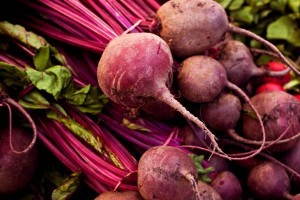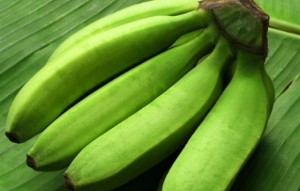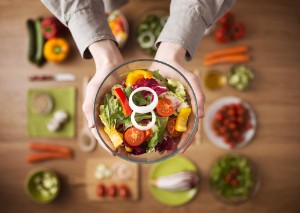Which vegetables and fruits can increase hemoglobin in the blood — Top 10
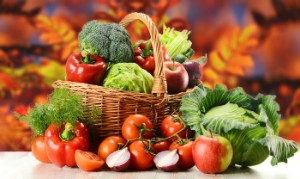 Hemoglobin is an organic protein found in red blood cells (erythrocytes). Its main purpose is to transport oxygen through all tissues.
Hemoglobin is an organic protein found in red blood cells (erythrocytes). Its main purpose is to transport oxygen through all tissues.
Almost 80% of hemoglobin consists of iron, which combines with oxygen (its oxidation process occurs, then &8212; reduction).
According to research, it is the lack of iron in the body that most often provokes a sharp drop in hemoglobin levels.
In this article, we will discuss which fruits and vegetables should be included in the diet in order to normalize the concentration of hemoglobin in the blood. You will also learn how dangerous it is to reduce its level.
Content
Symptoms of low hemoglobin and consequences
For an adult, the normal hemoglobin level is as follows:
- For women – from 120 to 150 g/l;
- For men – from 130 to 160 g/l.
In old age, the hemoglobin level in most cases increases up to 180 g/l – this is not considered a dangerous deviation and, as a rule, is assessed as a "stable norm". In pregnant women, the range of normal levels also expands slightly and can range from 110 to 155 g/ l – this is due to temporary changes in blood flow.
Doctors identify the following symptoms low hemoglobin:

- Feeling constantly tired (even if a person sleeps a fairly large amount of time, observes the regime of day and night);
- Regular headache without changing blood pressure;
- Manifestation of jaundice of the skin;
- Deterioration of the skin and nails;
- Muscle weakness;
- Shortness of breath;
- Slight decrease in blood pressure.
- In critical cases, a person may lose consciousness.
What is so dangerous about low hemoglobin? Oxygen starvation of all organs, of the brain , which accelerates the process of deactivation of nerve cells. At the same time, muscular atrophy develops, the walls of blood vessels become thinner and less resistant to rupture (with low hemoglobin, subcutaneous bleeding in the form of capillary nets often occurs).
Also, low hemoglobin can be accompanied by persistent angina pectoris, the development of other chronic diseases of the cardiovascular system .
It should be borne in mind that elevated hemoglobin levels also harm the body. In this case, it increases blood viscosity , the risk of thrombosis increases. Also, increased hemoglobin is accompanied by nervousness, decreased stress resistance .
Top 10 healthy vegetables and fruits
It is best to include in the diet those vegetables and fruits that contain iron and other metals as trace elements. The same zinc and magnesium regulate hematopoietic function, and iron is used to produce hemoglobin. Also, those vegetables and fruits that have a sufficiently high content of vitamins PP, K, C, E.
1 help to increase its concentration. Beet
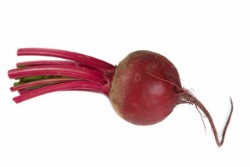 Very good increases hemoglobin beet juice
. It is enough to use it at least
20-30 milliliters per day
, in order to raise hemoglobin by 10 g/l during the week .
Very good increases hemoglobin beet juice
. It is enough to use it at least
20-30 milliliters per day
, in order to raise hemoglobin by 10 g/l during the week .
Another feature of beetroot is that it retains its useful properties in boiled form, and it also provides the body with the lion's share of indigestible fiber (which helps to normalize the work of the intestines, thereby obtaining more micronutrients from food).
2. Garnet
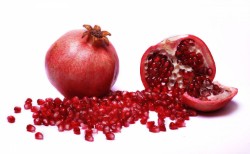 The inclusion of pomegranate fruits in the diet helps Normalize hematopoietic function
, raise blood pressure. Also
pomegranate perfectly raises hemoglobin
.
The inclusion of pomegranate fruits in the diet helps Normalize hematopoietic function
, raise blood pressure. Also
pomegranate perfectly raises hemoglobin
.
Doctors also claim that pomegranate helps prevent headaches. But it is grains that should be consumed, but it is better to abandon concentrated pomegranate juice – its use leads to a sharp increase in hemoglobin levels in a short period of time, which can cause angina pectoris. If you really drink juice, then dilute it with water in a ratio of 1 to 3.
3. Apples
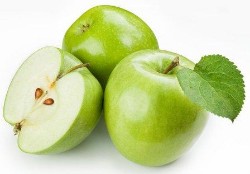 Apples are the most common fruits have the highest concentration of iron
. It is because of him that the cut apple is quickly covered with a brown film (or rather, its flesh). This is due to the oxidation of iron molecules.
Apples are the most common fruits have the highest concentration of iron
. It is because of him that the cut apple is quickly covered with a brown film (or rather, its flesh). This is due to the oxidation of iron molecules.
How much should I eat daily apples for raising hemoglobin ? About 3-4 medium–sized fruits will be more than enough. If you prefer concentrated juice, then you should drink it in small portions – only 20-30 milliliters. Apples are also an excellent source of vitamins A, C, E and PP.
4. Bananas
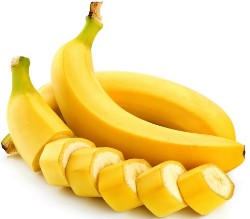 Bananas are also good for hemoglobin , because they contain a large amount of folic acid (vitamin B
6
), and she –
Stimulates iron absorption
. Without this vitamin, ferum is simply not synthesized to hemoglobin and is excreted along with feces literally immediately after consumption.
Bananas are also good for hemoglobin , because they contain a large amount of folic acid (vitamin B
6
), and she –
Stimulates iron absorption
. Without this vitamin, ferum is simply not synthesized to hemoglobin and is excreted along with feces literally immediately after consumption.
For those who do not like bananas or who are not recommended to eat them (for example, diabetes, obesity, chronic diseases of the gastrointestinal tract), you can prepare jelly from dried bananas. The only caveat is that such jelly is pre–washed 2 or 3 times with water (standing for at least 20-30 minutes). This will help to preserve all the fiber, but reduce the concentration of carbohydrates.
5. Grapefruit
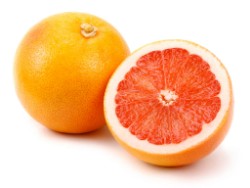 Grapefruit is a source of vitamins C and PP (it is contained in the zest and just gives it a taste of bitterness).
Grapefruit is a source of vitamins C and PP (it is contained in the zest and just gives it a taste of bitterness).
Also, the use of citrus fruits (oranges, lemon and others) accelerates metabolism, helps to absorb iron faster.
Just do not abuse grapefruit – excess ascorbic acid also harms the body (increases blood viscosity, provokes adhesion of red blood cells).
6. Ginger
 Has a positive effect on blood and ginger root. Moreover, it is necessary to consume only 5-10 grams of such a product per day in order to improve the functioning of the cardiovascular system and prevent oxygen starvation. Also ginger cleans the vessels
.
Has a positive effect on blood and ginger root. Moreover, it is necessary to consume only 5-10 grams of such a product per day in order to improve the functioning of the cardiovascular system and prevent oxygen starvation. Also ginger cleans the vessels
.
Ginger is recommended to be consumed fresh or dried, but not canned (upon contact with acetic acid, the essential oils included in the composition break down into the simplest elements).
7. Garlic
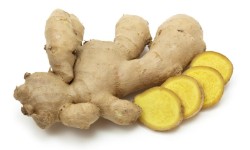 Is a good source of vitamin C, and also contains a wide range of essential oils, resins, helping the body to absorb iron faster
.
Is a good source of vitamin C, and also contains a wide range of essential oils, resins, helping the body to absorb iron faster
.
Another feature of garlic is that it accelerates the process of removing toxins (including inorganic types), which can provoke a sharp decrease in hemoglobin levels in the blood to a critical level.
8. Sauerkraut
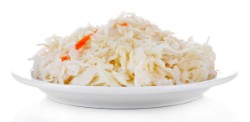 It contains ascorbic acid, moreover, practically in the same concentration as in lemon (about 350 milligrams of vitamin C per kilogram).
It contains ascorbic acid, moreover, practically in the same concentration as in lemon (about 350 milligrams of vitamin C per kilogram).
And red sauerkraut also contains a small amount of iron – it is more preferable to increase hemoglobin.
9. Sea cabbage
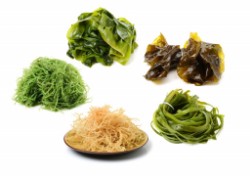 Is rich in iron, zinc, magnesium, vitamin PP and folic acid. Many doctors consider this product to be the most beneficial for the cardiovascular system
.
Is rich in iron, zinc, magnesium, vitamin PP and folic acid. Many doctors consider this product to be the most beneficial for the cardiovascular system
.
It is recommended to eat at least 30 grams of seaweed in any form every day (pickled and salted are the most common options).
10. Spinach
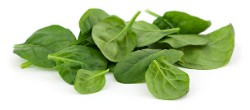 Among the greens, it is the richest in iron (almost 12 mg per 100 grams of fresh product).
Among the greens, it is the richest in iron (almost 12 mg per 100 grams of fresh product).
It is recommended to use it fresh, adding it to various kinds of salads. It goes well with olive oil and garlic.
Other products containing iron
Also check out this table of products containing iron:

;
What should be excluded from the diet?
Contribute to a decrease in hemoglobin levels:

- Almost all dairy products. They contain protein and complex carbohydrates, which slow down the process of hemoglobin synthesis. Also milk thickens the blood .
- Pasta. All cereals can also be included here. They prevent the absorption of iron by oxidizing it while still in the gastrointestinal tract. Such a micronutrient is no longer suitable for the formation of a hemoglobin cell.
- Chicken eggs. It is the protein contained in them that lowers hemoglobin. Basically, any food based on protein slows down the absorption of iron.
- Wheat flour and all products derived from it. Regular consumption of wheat bread leads to a decrease in hemoglobin, on average, by 15 g/l. Therefore, it is better to give preference to black bread or coarse bread (bran).
Nutrition features during pregnancy
During pregnancy, almost all vitamins, including folic acid (B), are rapidly consumed in the girl's body 6 ). It is the last element that needs to be paid the most attention.
 Folic acid during pregnancy is mainly used by the endocrine system to normalize the balance of sex hormones (which regulate the pregnancy process itself, prevent premature birth of a child).
Folic acid during pregnancy is mainly used by the endocrine system to normalize the balance of sex hormones (which regulate the pregnancy process itself, prevent premature birth of a child).
So, it is necessary to include bananas, fish in the diet (it contains omega-3 acids, which help to absorb B-group vitamins).
The same applies to vegetables and fruits containing iron. Some of these trace elements are used by the body to form the cardiovascular system of the unborn child, therefore, in women during this period, hemoglobin is constantly lowered (and remains so until the beginning of the third trimester of pregnancy).
Interesting video
We suggest watching these videos to familiarize yourself with the topic:
;
Conclusion
In total, it is quite simple to increase hemoglobin. The best option is to include animal offal (lungs, liver, tongue, kidneys) in the diet. But if a person is a vegetarian or simply does not eat such food, then you should pay attention to the above vegetables and fruits.
And in addition to them, you can consult with your doctor about complex vitamins containing vitamin C, folic acid, and iron in so-called therapeutic doses.

